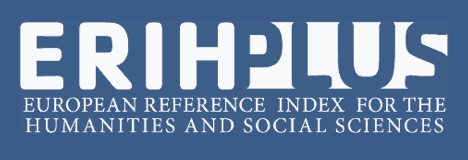Geocinema in geography education
Abstract
In this article we present the results of a research project that took the cinema as an auxiliary resource of the process of construction of geographic knowledge. It aims to deepen the discussion about the use of cinema in Geography studies among the students of the Integrated Technical High School of the Federal Institute of Alagoas. Questionnaires were applied to them to point out the most difficult subjects, after which a multidisciplinary team selected the productions according to the menus of Geography. It was noticed that they present difficulties with subjects like geopolitics, cartography, climate, relief and vegetation, although they show interest by them. They suggest more dynamic classes, confirming the importance of the cinematographic language for the teaching of Geography. At the end, the "Geocinema" handout will be developed to support the teaching work.
References
ARNAUD, A. R. O filme como recurso didático no ensino médio: uma experiência interdisciplinar no IFPB – Campus Sousa. In: CONGRESSO NACIONAL DE EDUCAÇÃO, 3., 2016, Natal. Anais... Natal: UEPB, 2016. 12p. Disponível em:
BRASIL. Parâmetros Curriculares Nacionais: Geografia. Brasília: MEC/SEF, 1998.
CAMPOS, R. R. de. Cinema, Geografia e sala de aula. Estudos Geográficos, Rio Claro, v. 4, n. 1, p. 1-22. jun., 2006. Disponível em:
FIORAVANTE, K. E. Geografia e cinema: as espacialidades do filem Adeus Lenin! Geografia em Questão, Marechal Cândido Rondon, UNIOESTE, v. 6, n. 1, p. 102-115 Disponível em:
FREIRE, P. Educadores de rua: uma abordagem crítica: alternativa de atendimento aos meninos de rua. Bogotá: UNICEF, 1989.
KAERCHER, N, A. Desafios e Utopias no Ensino de Geografia. 2. ed. Santa Cruz do Sul: Edunisc, 1998.
KIMURA, S. Geografia no ensino básico: questões e propostas. São Paulo: Contexto, 2008.
OLIVEIRA, M. M. de. A Geografia escolar: reflexões sobre o processo didático-pedagógico do ensino. Expressões Geográficas, Florianópolis, UFSC, n. 2, p. 10-24, jun., 2006. Disponível em:
PONTUSCHKA, N.; PAGANELLI, T.; CACETE, N. Para ensinar e aprender Geografia. São Paulo: Contexto, 2007.
RODRIGUES, W. C. Metodologia científica. Paracambi: FAETEC/IST, 2007. Disponível em:
SANTOS, M. Por uma outra Geografia. 3. ed. São Paulo: Hucitec, 1986.
______. A natureza do espaço. 4. ed. São Paulo: Edusp, 2006.
SANTOS, E. M. dos; AMAZONAS, M. de A. Sexo/gênero/desejo no filme Labirinto de Paixões, de Pedro Almodóvar. In: SEMINÁRIO INTERNACIONAL FAZENDO GÊNERO, 13., Florianópolis. Anais eletrônicos... Florianópolis: UFSC, 2017. 10p. Disponível em:
SÃO PAULO. Secretaria de Estado da Educação. Currículo do Estado de São Paulo: ciências humanas e suas tecnologias. São Paulo: SED, 2011. p. 74-113.
SCHÄFFER, N. O. Ler a paisagem, o mapa, o livro... escrever nas linguagens da Geografia. In: NEVES, I. B. et al. (Org.). Ler e escrever: compromisso de todas as áreas. 8. ed. Porto Alegre: UFRGS, 2007. p. 86-103.
STÜRMER, A. B. Geografia interdisciplinar e desenvolvimento territorial. Geosaberes, Fortaleza, PPGGEO/UFC, v. 8, n. 16, p. 69-80, set./dez. 2017. Disponível em:

This work is licensed under a Creative Commons Attribution-NonCommercial 4.0 International License.
Policy Proposal for Free Access Journals
Authors who publish in this journal agree to the following terms:
a. Authors retain the copyright and grant the journal the right of first publication, with the work simultaneously licensed under the Creative Commons Attribution License which allows the sharing of the work with acknowledgment of the authorship of the work and initial publication in this journal.
b. Authors are authorized to take additional contracts separately, for non-exclusive distribution of the version of the work published in this journal (eg publish in institutional repository or as a book chapter), with acknowledgment of authorship and initial publication in this journal.
c. Authors are allowed and encouraged to publish and distribute their work online (eg in institutional repositories or on their personal page) at any point before or during the editorial process, as this can generate productive changes, as well as increase the impact and The citation of published work (See The Effect of Free Access).





















